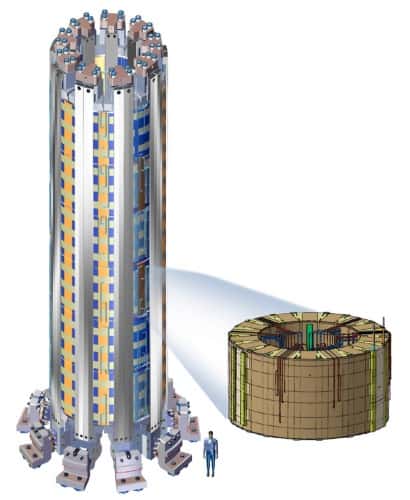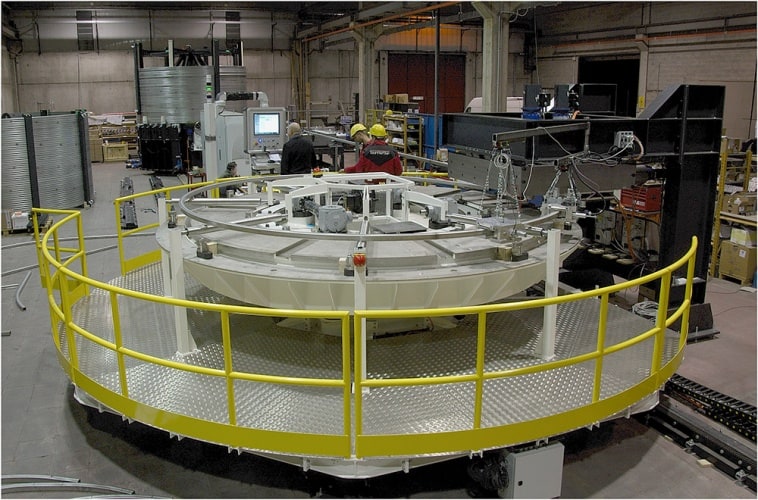US firm General Atomics (GA) has started construction on one of the most important components of ITER, the experimental nuclear fusion reactor currently being built in the South of France: the huge superconducting electromagnet that will sit at the centre of the doughnut-shaped reactor. Called the Central Solenoid (CS), it will weigh 1,000 tonnes when completed, making it among the most powerful magnets ever built and one of the heaviest single components of ITER.

The CS has two roles in ITER: its 13.1T magnetic field (some 500 times stronger than the magnetic field at the Earth’s surface) will keep the electrically-charged plasma inside ITER away from its inner walls, and will also help set up a current that will keep the charged particles of the plasma circulating around the reactor. The solenoid, which is made of six stacked modules, will store some 5.5 gigajoules of energy: enough to lift the aircraft carrier USS Gerald Ford, which weighs around 100,000 tonnes.

GA is building seven modules for the magnet at its facility in San Diego; one of these is a spare part. Each module is 4.1m in diameter and 3m high, and contains 6km of niobium-tin (Nb3Sn) alloy superconducting wire wound onto a stainless steel core, giving it total mass of around 120tonnes. The total height of the CS is 18m — the entire height of the ITER reactor — and it will be cooled to a few degrees above absolute zero in operation. GA expects to be winding consuctor onto the module cores until 2017. It will be in place in the reactor at Cadarache, near Marseilles, by 2019.




Poll: Should the UK’s railways be renationalised?
I think that a network inclusive of the vehicles on it would make sense. However it remains to be seen if there is any plan for it to be for the...